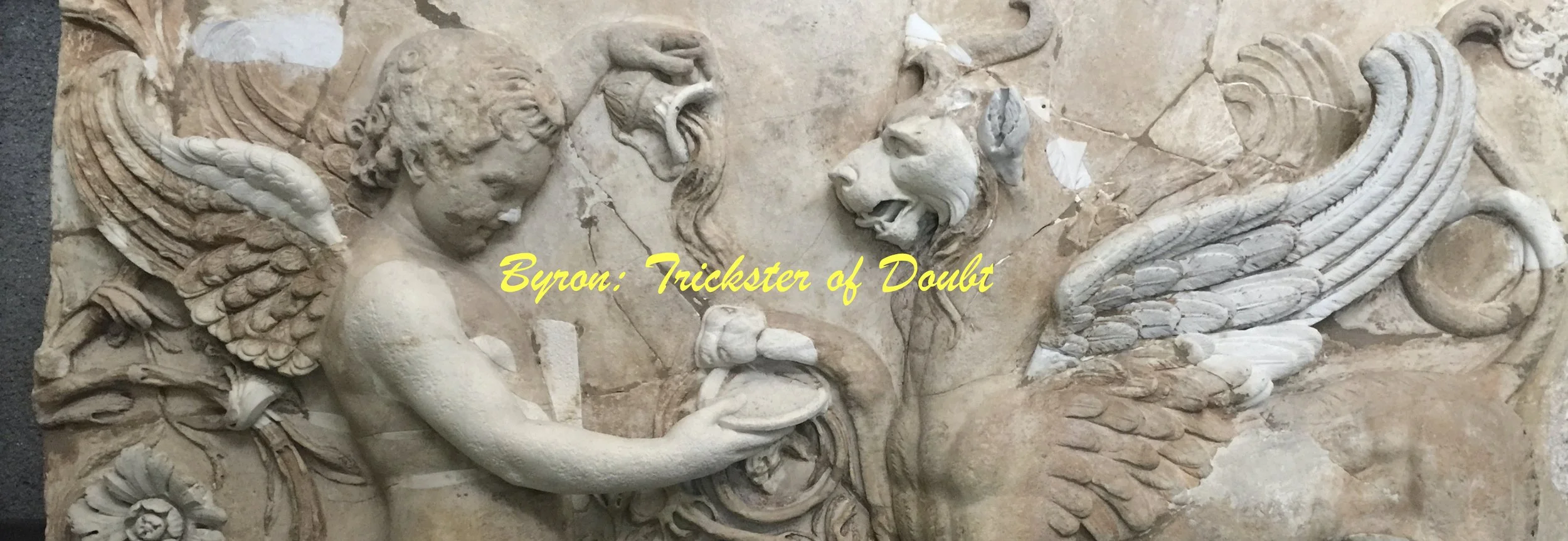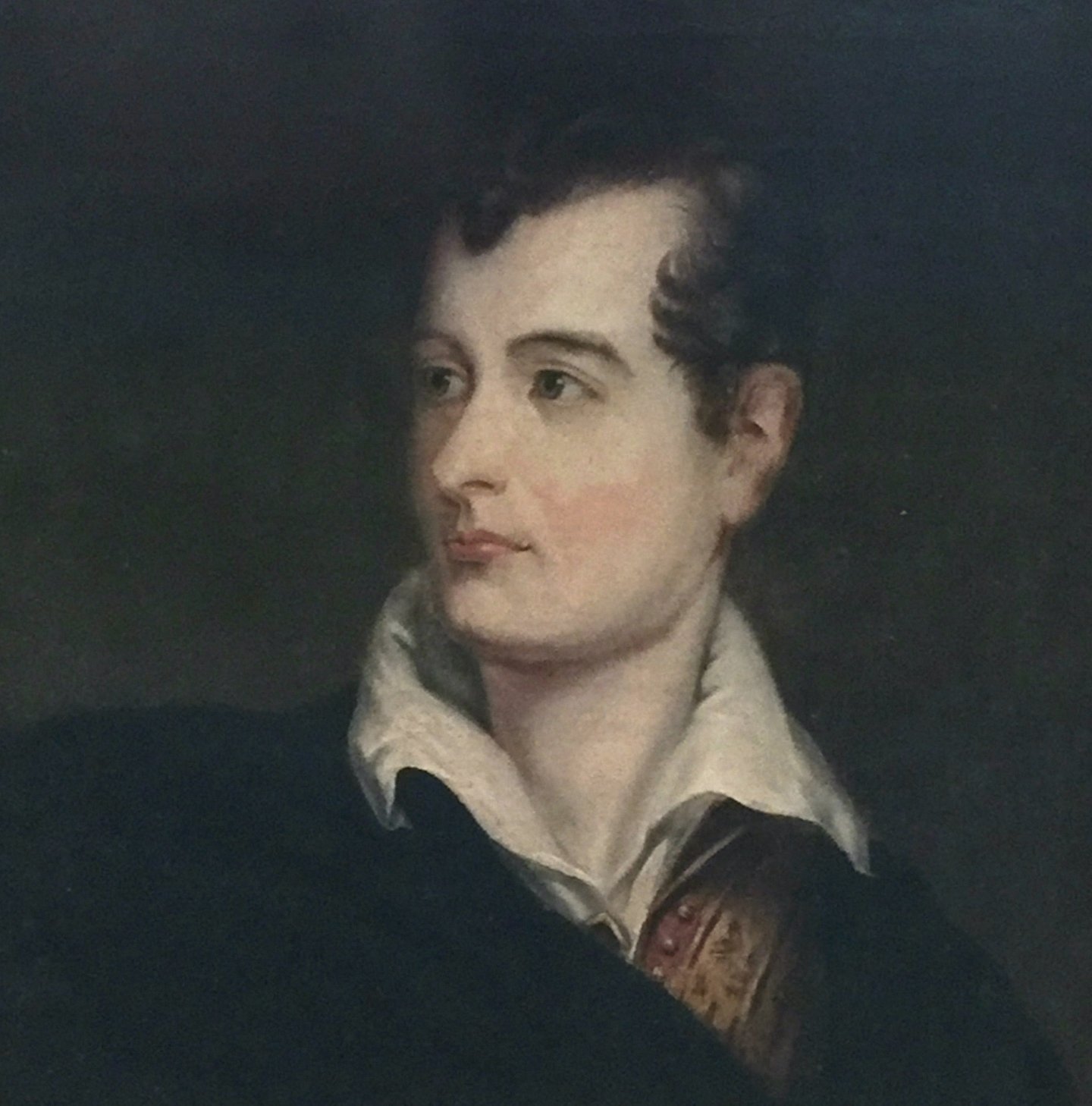The Double Refuge ❤️ Three Little Words
Byron: Trickster of Doubt
Byron & Keats form an interesting pair, given that while Byron mocked Keats, the two share a great deal in common: both are largely agnostic, even before the term was coined. And while Keats was clearly a democrat, Byron is more intense in his alignment of free thinking and political freedom.
❤️
Byron’s mockery of Keats is unfortunate, yet Byron was under the illusion that Keats was against Neo-classical poetry — a misconception about which Shelley tried to set Byron straight. Ironically (or perhaps paradoxically, if one can see the problem as self projection) Byron was the one who was rather exclusive, writing defensively against the down-to-earth side of Romantic poetry.
This small conflict between the two poets perhaps only goes to show that geniuses can be idiots too. In any case, the two poets share a great deal more than a ridiculous spat, especially when it comes to philosophic and literary doubt. Keats expresses his doubt in subtle ways, as we saw on the page, On Nightingales & Unified Sensibility, and also in very direct ways, as in his sonnet about climbing to the top of Ben Nevis: “Thus much I know that, a poor witless elf, / I tread on them, — that all my eye doth meet / Is mist and crag, not only on this height, / But in the world of thought and mental might!” Byron also uses both subtlety and bluntness, as in his subtle play on the word doubt and in his blunt assertion that he will “war with all who war with Thought.”
❤️
In his satiric epic Don Juan, Byron gets at both hard and soft agnosticism 45 years before Huxley coins the term agnostic in 1869. In canto 9, stanza 17 (written in 1823), he evokes the hard version when he writes, “There’s no such thing as certainty; that’s plain / As any of mortality’s positions.” Yet Byron ends the stanza by undermining this certainty: “So little do we know what we’re about in / This world, I doubt if doubt itself be doubting.” Note that he doesn’t say, I’m sure that doubt is the same as doubting. Rather, he says, I doubt (a verb) that doubt (a noun & a way of thinking) is the same as doubting (possibly a progressive verb, but more likely a gerund).
Byron does at least three interesting things in this stanza. First, he plays in a Shakespearean manner with a repetition that renders different meanings: the word doubt takes three forms in a seven-word line. Second, he employs bathos or rhetorical anticlimax, going from serious logic to comic absurdity: about in rhymes awkwardly and humorously with doubting. Third, this playfulness includes an ambiguity: the final word, doubting, is either a verb or a gerund, that is, a noun that’s spelled like a progressive tense verb yet which functions as a thing or noun.
If doubting is a noun then we have a paradox: the idea of doubting is fundamentally different from doubt itself. This is a paradox, rather than a contradiction because doubt is so universal that it takes on the quality of being certain and hence isn’t the same as being doubtful. If doubting is a verb, then we have the bizarre situation where doubt isn’t the primary characteristic of doubting. In addition, we have the humorous possibility that an abstract concept (doubt) is engaged in a form of complex thinking (doubting). The possibility is enhanced by the phrase doubt itself, which can of course mean doubt as separate from other things. Yet this is rather unnecessary and redundant. It may make as much sense to think that Byron is anthropomorphizing doubt (much as he often anthropomorphizes love) by giving it a self.
This type of playfulness and ambiguity is helpful in getting at the paradoxes and conundrums involved in doubt and belief — especially the notion that agnostics generally believe in doubt and sometimes doubt this belief. Byron may, as well, be mocking the philosophers with their endless tautologies and abstruse convolutions. Byron is at once making a serious philosophical point and undermining his own exaggerated authority.
❤️
❤️
Next: ❤️ Keats’ Negative Capability



